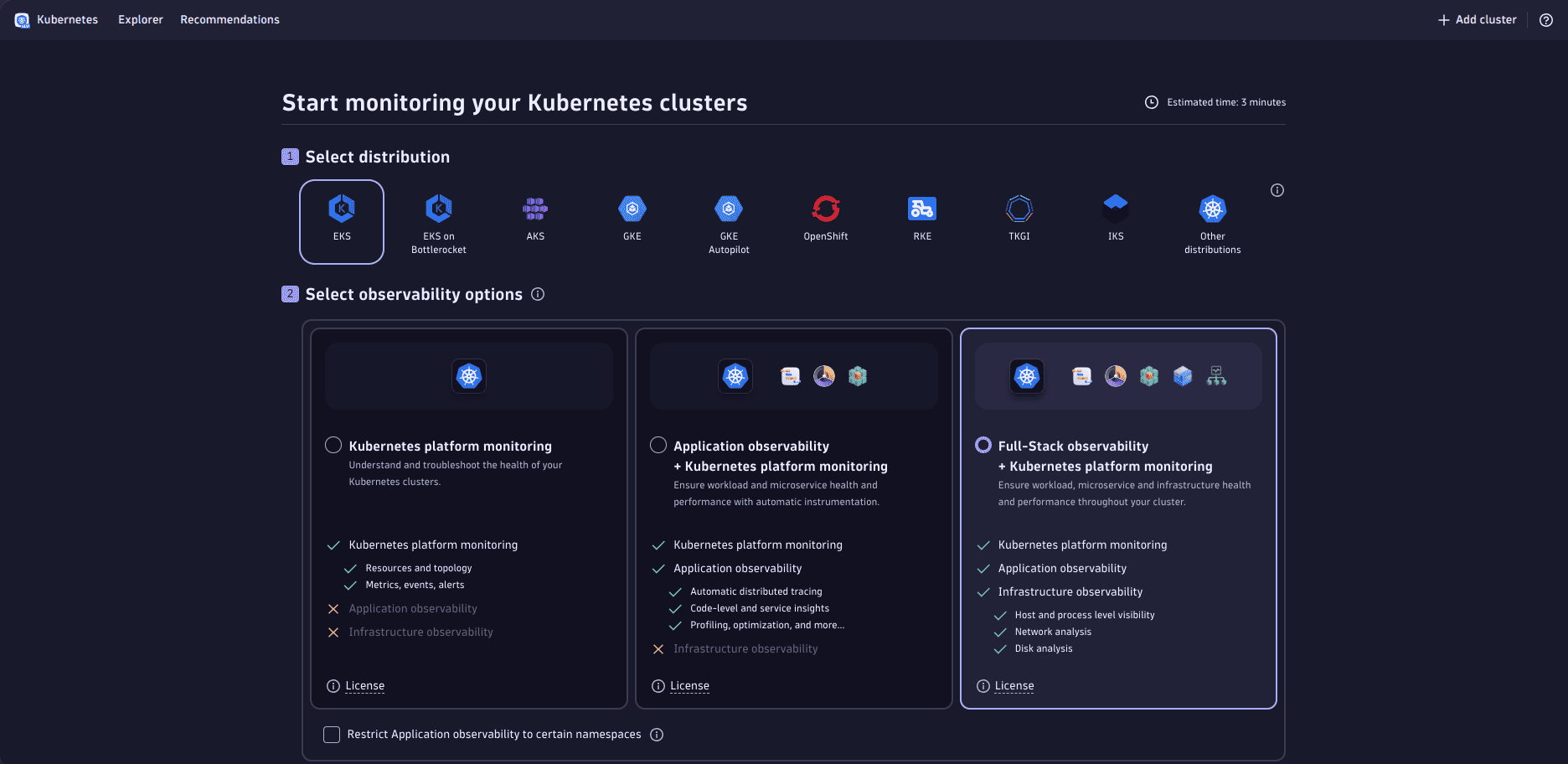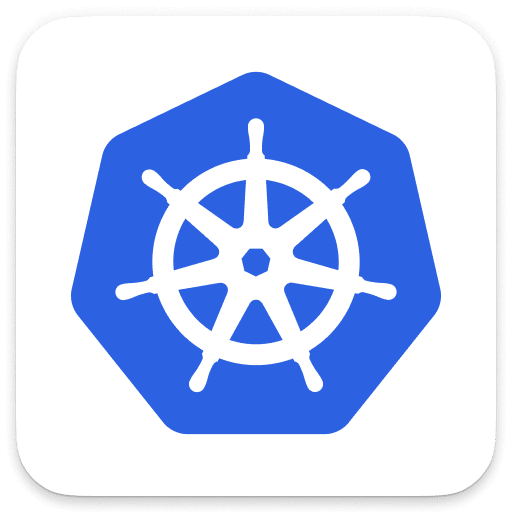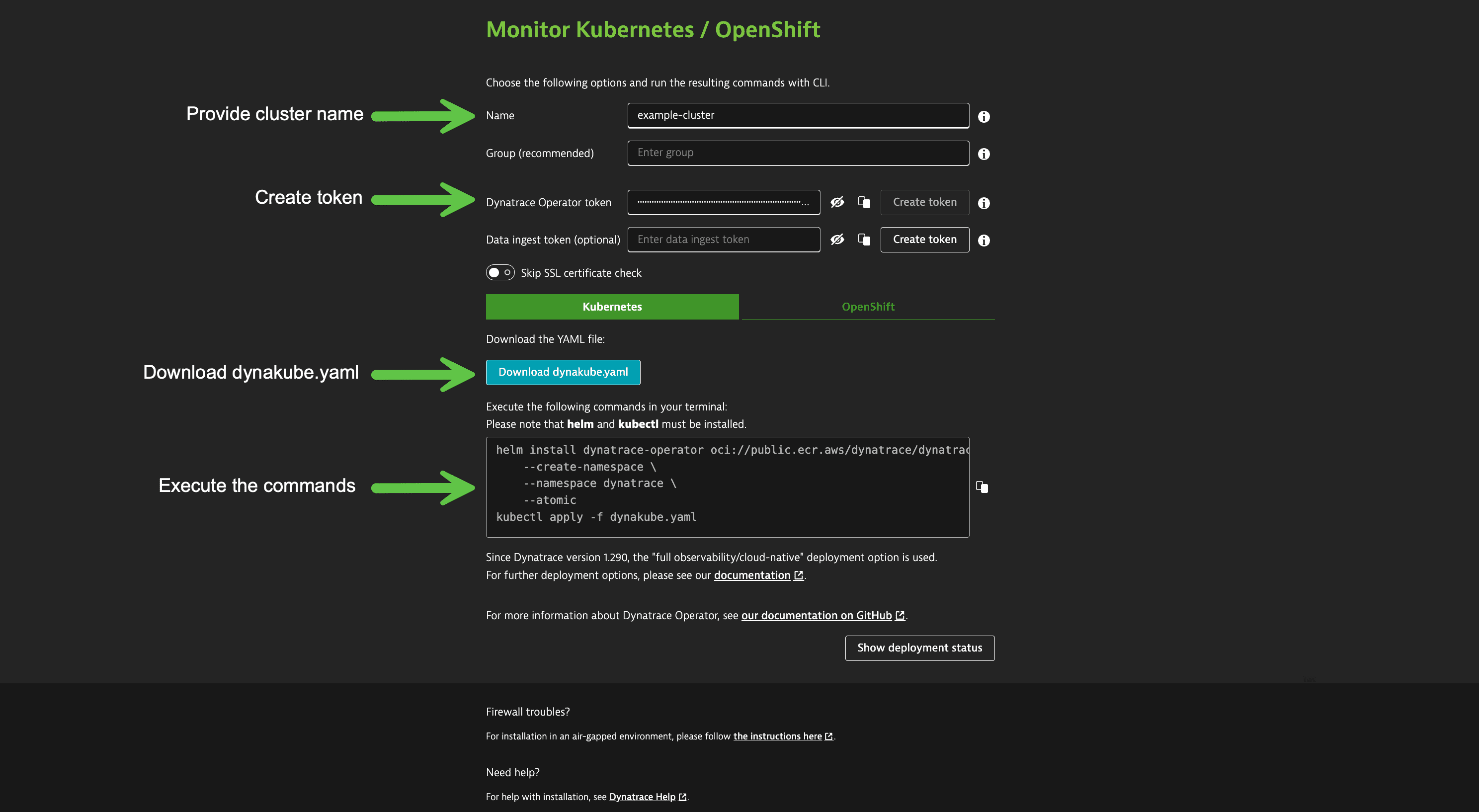Quickstart
- Latest Dynatrace
- 2-min read
This page guides you to install Dynatrace components within a minute on your Kubernetes cluster in order to quickly benefit from the Dynatrace observability & analytics platform.
Prerequisites
Before you begin
Before installing Dynatrace on your Kubernetes cluster, ensure that you meet the following requirements:
- Your
kubectlCLI is connected to the Kubernetes cluster that you want to monitor. - You have sufficient privileges on the monitored cluster to run
kubectloroccommands.
Cluster setup and configuration
-
You must allow egress for Dynatrace pods (default: Dynatrace namespace) to your Dynatrace environment URL.
-
For OpenShift Dedicated, you need the cluster-admin role.
-
Helm installation Use Helm version 3.
Supported versions
See supported Kubernetes/OpenShift platform versions and distributions.
Deploy Dynatrace Operator
Latest Dynatrace
To start monitoring a new Kubernetes cluster with Dynatrace, go to Kubernetes, select Add cluster in the upper-right corner, and follow the on-screen steps as outlined below.

-
Select your distribution.
-
Select your observability options. By default, Full-Stack observability and Log Management and Analytics are enabled. If the selected distribution is GKE Autopilot or EKS on Bottlerocket, Full-Stack observability is not available and Application observability is the default option.
- Optional If you want to deploy Application observability to certain namespaces only, select Restrict Application observability to certain namespaces and provide a Kubernetes namespace selector.
- Optional If you want to deploy Log Management and Analytics to certain resources only, select Restrict Log monitoring to certain resources and provide the Namespaces and/or Pod Annotation to select the pods you want to monitor. When both filters are applied, only logs from pods that are in the specified namespaces and have the specified pod annotation will be ingested.
-
In Configure cluster, provide the following information.
- Required Cluster name is used as display name in the Kubernetes app.
- Recommended Network zone helps you to route the traffic efficiently, avoiding unnecessary traffic across data centers and network regions.
- Recommended Host group enables you to categorize and manage multiple hosts that share similar characteristics or purposes within your environment. This is only available for Full-Stack observability.
-
In Install Dynatrace Operator, provide your Dynatrace Operator token, and, optionally, data ingest token.
- Select Download dynakube.yaml.
- Execute the commands provided in Install Dynatrace Operator.
- Optional Verify the deployment's success. The status should be
Running.
kubectl get dynakubes -n dynatraceFor more information, see Set up Dynatrace on Kubernetes.
To collect logs, we recommend using the Dynatrace log module. The module is preconfigured to automatically detect and ingest logs from stdout/stderr streams. To learn more about the Dynatrace log module and how to add it to existing installations, see Kubernetes log monitoring.
- Optional Wait to get successful connection signal from your cluster. Once a signal from the ActiveGate installed on your cluster is received, you can go to the cluster by selecting Go to new cluster.
Learn more about the Kubernetes app or read the FAQs.
Learn more
Deployment mode
Determine the recommended deployment mode for your intended setup based on your requirements.
Integrations
Leverage open source components to ingest additional observability signals into Dynatrace.
How it works
Familiarize yourself with Dynatrace components that are deployed in your Kubernetes cluster.
Guides
Learn how you can configure Dynatrace Operator to support specific use cases.
Get actionable answers
Start to analyze your Kubernetes clusters and containerized Apps with Dynatrace and benefit from actionable answers.

